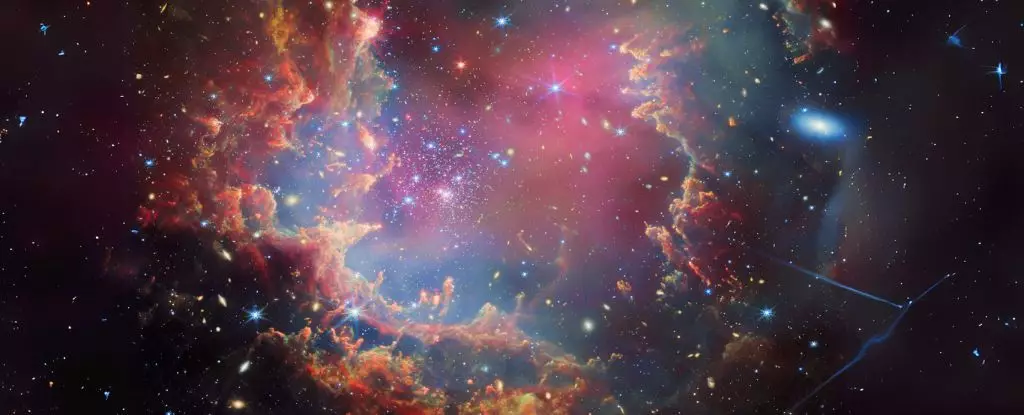Recent findings from cosmologists have flipped the script on our understanding of when and how water came to be in the universe. Traditionally, it was believed that the absence of heavier elements like oxygen—essential for water formation—made the primeval cosmos a dry expanse. However, groundbreaking research led by Daniel Whalen from Portsmouth University reveals that this assumption may have underestimated the early universe’s complexity. Their simulations portray a vibrant post-Big Bang environment in which the building blocks of water were not only formed but existed in primordial galaxies approximately 100 million years after the explosive origin of everything we know.
This revelation challenges long-standing paradigms and provokes a reconsideration of our cosmic narrative. It shifts us from viewing the universe as a barren expanse to one teeming with possibilities—where the essential ingredients for life emerged far earlier than we ever imagined.
Whalen and his team utilized advanced simulations to recreate supernova explosions of early stars, particularly those around 13 and 200 times the mass of our Sun. Within fractions of a second following these monumental explosions, temperatures and pressures soared so high that nuclear fusion ignited the formation of heavier elements, including oxygen. As these massive stars exhausted their hydrogen and helium fuel, their chaotic demise catalyzed a chain reaction that led to the cooling and ionization of expelled gases.
What sets this research apart is its focus on the turbulent aftermath of supernovae, where the expelled gases—oscillating between 1,630 light-years of space—cooled down rapidly. The dynamic configurations allowed hydrogen molecules to pair up, facilitating the creation of molecular hydrogen (H2), a critical precursor for water. This breakthrough isn’t just a matter of the “how” but also a poignant inquiry into the “when.” The notion that water could form within the early universe fundamentally reframes our understanding of cosmic evolution.
At the heart of this discovery lies the concept of cosmic recycling, where supernova remnants become breeding grounds for the next generation of stars—and consequently, planets. The research indicates that dense clumps of material in the halos of these supernova remnants possess a higher metal concentration, leading to the formation of rocky planetesimals that could harbor water.
A particularly fascinating aspect raised by Whalen’s team is the idea of overlapping supernova explosions, which could produce even denser cores and thereby increase the likelihood of water survivability in these environments. In regions where gas density is sparse, the opposite might occur, leading to the destruction of water, further emphasizing the delicate balance at play in the cosmos.
This celestial dance fascinates not only astrophysicists but also astrobiologists. If water was indeed being formed as early as the first few hundred million years of the universe’s existence, then the foundation for life as we know it was potentially laid much sooner than previously thought, enriching the debate on the possibility of early life forms developed in primordial celestial environments.
The implications of this research extend far beyond simply rewriting the timeline of water formation. For astrobiology, it offers a tantalizing prospect: if water was abundant in these early epochs, the likelihood of life—if not existing—having the conditions necessary for emergence increases significantly. Today, scientists are keenly interested in other extraterrestrial environments that could mimic these primordial conditions, particularly in the search for exoplanets that harbor the same life-sustaining essentials.
Moreover, as we refine our detection techniques with advanced instruments like the James Webb Space Telescope (JWST), we may very well uncover signs of these early galaxies and perhaps even trace the water back to its cosmic origins. This paints a compelling picture, suggesting that the universe is not merely an expansive void waiting to be explored but an intricate tapestry of cosmic chemistry waiting to reveal its secrets.
This research challenges us to rethink the narrative of cosmic evolution and consider the implications of life’s fundamental building blocks being formed in the cradle of the universe long ago. The idea that we may not only be made of stardust but also of water formed in a time when the universe was still a child is not just a scientific inquiry—it aligns with a broader philosophical reflection on our place in the cosmos.

